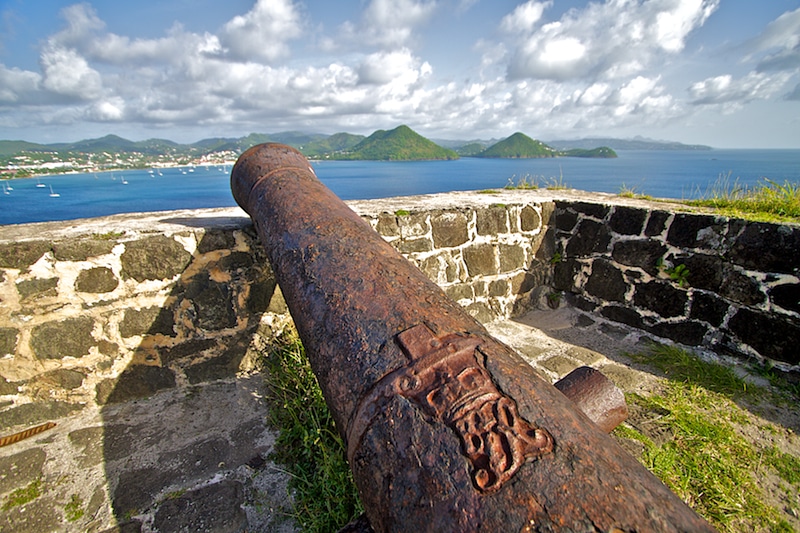History and Culture
Let Her Inspire You
History and Culture
Saint Lucia’s history is a rich tapestry. For hundreds of years, the island has been a melting pot of cultures; in many ways, it was a gateway to the New World. Subsequently, the island has a strong sense of heritage and cultural identity that locals vigorously celebrate to this day. Immerse yourself in Saint Lucia’s story, from her colorful pirate history and her colonial past to the deeply held customs of her people.

A Brief History of Saint Lucia
Early Saint Lucia History
Saint Lucia was first known as “Louanalao” by the Arawak Indians in 200 AD, meaning “Island of the Iguanas,” and then “Hewanorra,” in 800 AD when the Carib Indians arrived and assimilated their culture into Saint Lucia. Residents of Carib descent can still be found in Saint Lucia today.
The Caribs lived on Saint Lucia until the 1600s, when settlers attempted to take control of the island to boost European trade. Even during this period of colonialism, the Caribs continued to fight and stopped multiple attempts by the English and French to settle on the island.
Juan de Cosa didn’t actually colonize Saint Lucia. That honor falls to a pirate named François Le Clerc, nicknamed Jambe de Bois because of his wooden leg. Peg-Leg Le Clerc used Pigeon Island to attack Spanish ships in the 1550s, and the island is now a National Landmark with historic sites and museums to enthrall those who visit.
COLOR FULL
WHETHER ILLUMINATING colonial color-block villages or adding chiaroscuro to historic masterworks, the light of Saint Lucia creates a picture unlike anywhere on earth.
Saint Lucia and Colonialism
In the 1600s, the French, English, and Dutch all attempted to take Saint Lucia as one of their colonies. The Dutch attempted to build Vieux Fort in the 1600s, but were pushed out by the Caribs. In 1639, the British sent 400 settlers to the island, who were wiped out by the Caribs in less than two years.
In 1651, a member of the French West India Company purchased the land from the Caribs to make it a French colony, and the English immediately sent 1,000 men to take back the island. This fighting continued until 1814, when the French ceded Saint Lucia to the English.
Fast forward to modern times. Saint Lucia was one of the last European colonies to finally declare independence. In fact, she only became independent within the British Commonwealth in 1979 and finally has a thriving, peaceful economy and sovereign government.

Modern Saint Lucia Culture
The diverse Saint Lucia history means it is a melting pot of various cultures. Carib culture still has a strong influence on the island, even though it is mixed with African cultures brought over during colonial times. English, French, and Dutch elements also blend with the others on the island, making Saint Lucia culture unique to those who visit.
Visitors who set foot on Saint Lucia can experience this culture, and learn about the various eras of the island’s history. Explore ancient archaeological sites from Arawak times or walk along the Old Town of Vieux Fort to feel what it would be like living in Saint Lucia during the 17th and 18th centuries. The history of the island lives on through Saint Lucia’s diverse culture.
